Motivation and objectives
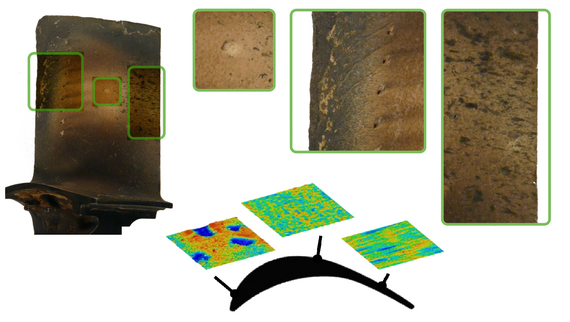
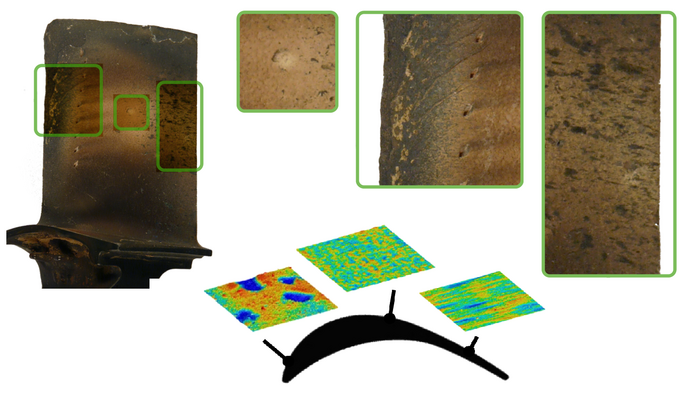
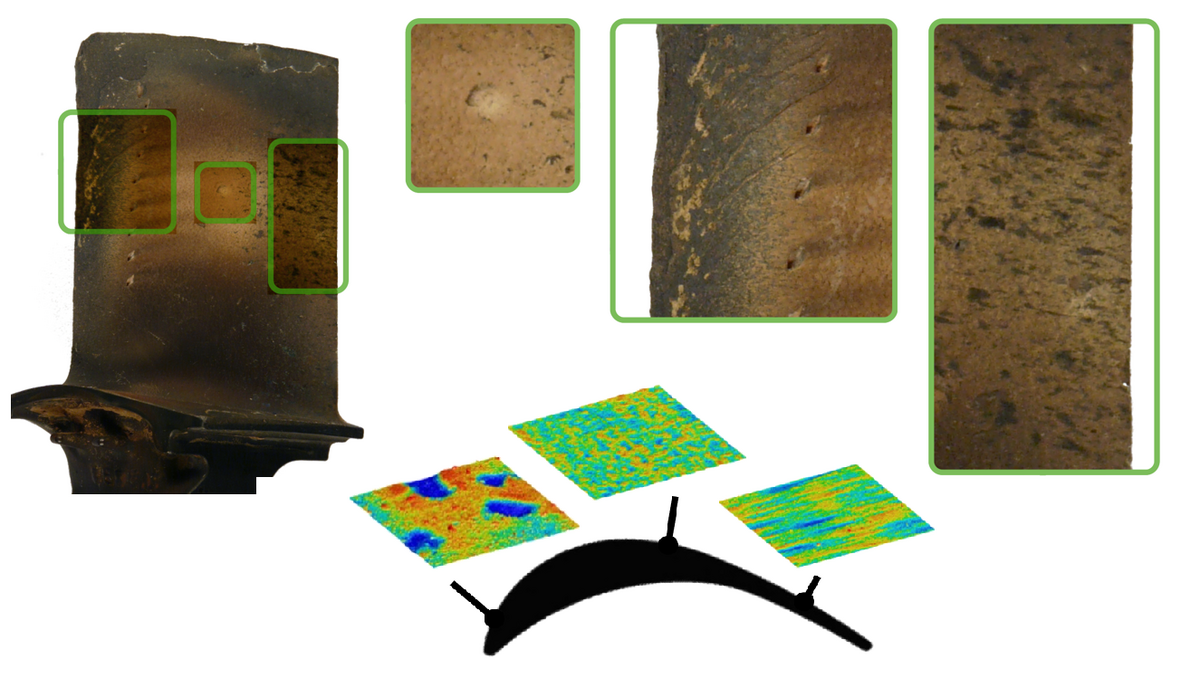
The flow prediction of integral and local impact of complex roughness on the blading with established Reynolds-Averaged Navier-Stokes (RANS)-Methods is currently limited. In power plant parts, the quantitative impact of complex roughness is determined by manifold, multi-modal aerodynamic boundary conditions and effects that interact with each other. Thus, roughness affects the condition of laminar, transitional and turbulent boundary layers. The objective of sub-project B3 is to model a RANS-based description of the local roughness impact on flow boundary layers, and hence predict accurate the impact of complex roughness on the aerodynamic losses, as well as the work loading of compressors and turbines. Based on the knowledge and data of the first two funding periods, the work package includes the development of a turbulence- and transition-model with its modeling, calibration and validation.
Results
In the first two SFB funding periods, the impact of complex roughness on the flow of blading and near wall sections could be quantified experimentally and numerically. The reason behind the limited comparability of the results with established RANS-methods was identified as insufficient representation of small-scale turbulent structures and imprecise transfer of the geometrical characterization of complex roughness structures into two-dimensional parameters. After the geometric characterization of roughness by the equivalent sand grain roughness, the anisotropy of the roughness also has a significant impact on the boundary layer. Based on these results new numerical and experimental methods has been developed to clarify the physical settings of loss appearance, as well as a work out of first approaches for model-based predictions of roughness effects.
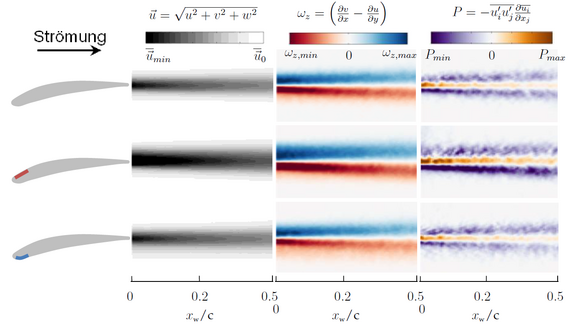
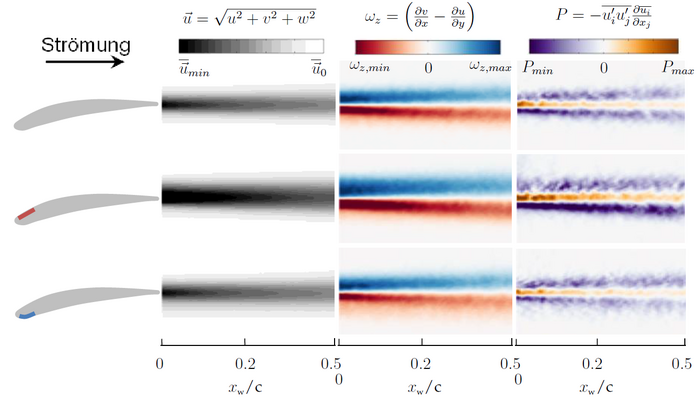
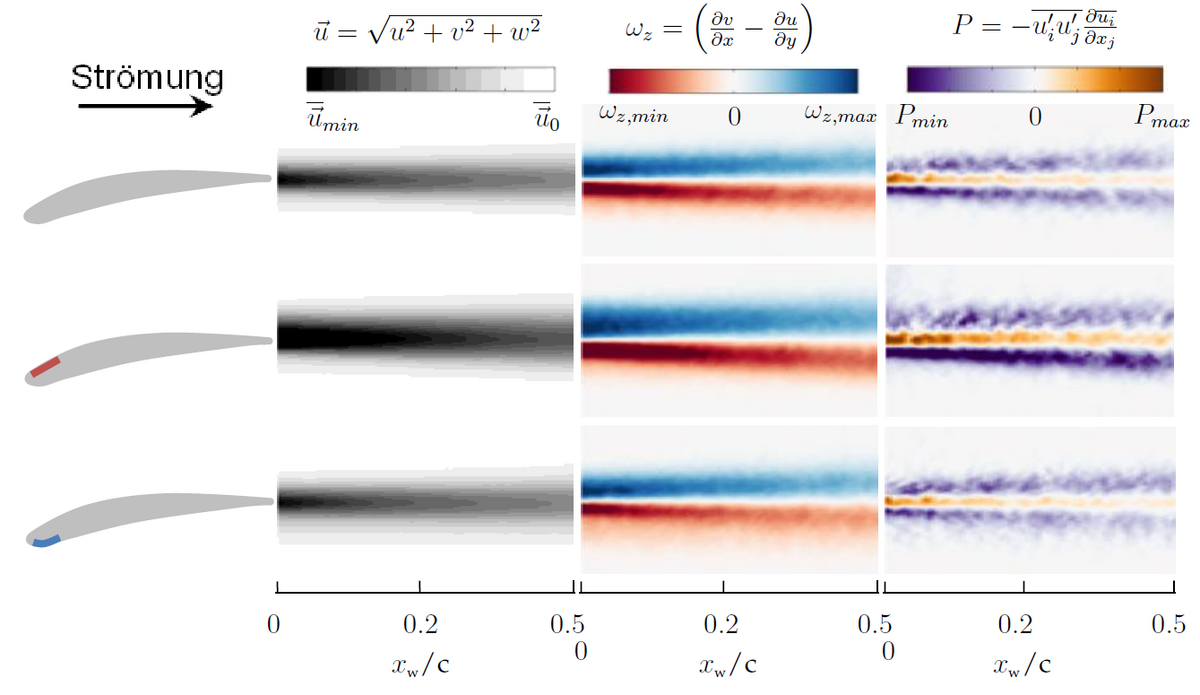
Current research and outlook
The main scientific objective of the running third funding period is the establishment of a model to predict the impact of complex roughness on the performance and the efficiency of multistage power plants with Computational Fluid-Dynamics (CFD). This includes the validation of the developed and implemented model, as well as the data supply of sensitivities concerning power plant module performance and efficiency in the face of complex roughness. Subsequently, these sensitivities shall be used for the rating of different regeneration modes on the power plant. If the complex surface structure is known, the development of the model-based method with finalizing the project can be transferred to the flow of many technical surfaces, like e.g. wind energy plants and stationary gas turbines.



Subproject leader
30823 Garbsen
30823 Garbsen
Staff
Publications
International Scientific Journal Paper, peer-reviewed
-
(2020): Numerical Study of Stage Roughness Variations in a High Pressure Compressor, JGPP 11 (3), S. 16–25
DOI: 10.1007/s11573-020-00993-z. -
(2019): Surface roughness of real operationally used compressor blade and blisk, Proceedings of the Institution of Mechanical Engineers, Part G: Journal of Aerospace Engineering, 1-10
DOI: 10.1177/0954410019843438 -
(2017): Experimental Investigation of the Aerodynamic Effect of Local Surface Roughness on a Turbine Blade, International Journal of Gas Turbine, Propulsion and Power System
-
(2016): Resulting Aerodynamic Losses of Combinations of Localized Roughness Patches on Turbine Blades, AIAA Journal 54 (8), S. 2552–2555
DOI: 10.2514/1.J054602 -
(2014): Impact of Surface Roughness on the Turbulent Wake Flow of a Turbine Blade, Journal of Aerodynamics 2014, S. 1–9
DOI: 10.1155/2014/458757
International Conference Paper, peer-reviewed
-
(2020): Performance Simulation of Roughness Induced Module Variations of a Jet Propulsion by Using Pseudo Bond Graph Theory, Proceedings of ASME Turbo Expo 2020 Turbomachinery Technical Conference and Exposition GT2020
DOI: 10.1115/GT2020-14456 -
(2019): Improving Aerothermal and Aeromechanical Turbomachinery Design by Combining High-Fidelity Methods with Multi-Stage Approaches., Gas Turbine Society of Japan (Hg.): Proceedings of the International Gas Turbine Congress 2019 Tokyo
-
(2019): Numerical Study of Stage Roughness Variations in a High Pressure Compressor, Gas Turbine Society of Japan (Hg.): Proceedings of the International Gas Turbine Congress 2019 Tokyo.
-
(2018): Towards Immersed Boundary Methods for Complex Roughness Structures in Scale-Resolving Simulations, 32nd European Conference on Modelling and Simulation (ECMS 2018), 22-25 May 2018, Wilhelmshaven, Germany
ISBN: 78-0-9932440-6-3 -
(2015): Prediction of the 3D Surface Topography after Ball End Milling and its Influence on Aerodynamics, Procedia CIRP 31, S. 221–227
DOI: 10.1016/j.procir.2015.03.049 -
(2015): Experimental Investigation of the Aerodynamic Effect of Local Surface Roughness on a Turbine Blade, In: Gas Turbine Society of Japan (Hg.): Proceedings of the International Gas, S. 371–380.
-
(2013): Aerodynamic Effects of Non-Uniform Surface Roughness on a Turbine Blade, Proceedings of ASME Turbo Expo. ASME. San Antonio, 01.01.2013
-
(2013): Numerical Investigation on the Influence of Anisotropic Surface Roughness on the Skin Friction, Proceedings of 10th European Conference on Turbomachinery (ETC), 15-19 April 2013. Lappeenranta University of Technlogy. Lappeenranta, Finnland, 01.01.2013
International Conference Paper, not peer-reviewed
-
(2020): The Effect of Rough-Wall Boundary Conditions on RANS-Based Transition Prediction, Proceedings of Global Power and Propulsion Society
DOI: 10.33737/gpps20-tc-53 -
(2018): Analysis of local roughness combinations on the aerodynamic properties of a compressor blade, 2018 AIAA Aerospace Sciences Meeting, AIAA SciTech Forum, 8-12 January 2018, Kissimmee, Florida, USA, AIAA2018-0345
-
(2018): Experimental Investigation of the Influence of Anisotropic Surface Structures on the Boundary Layer Flow, Institute of Aeronautics and Astronautics (Hg.): 2018 AIAA SciTech Forum Aerospace Sciences Meeting, Kissimmee, Florida, USA
-
(2015): On the resulting aerodynamic loss of combinations of localized surface roughness patches on a turbine blade, In: American Institute of Aeronautics and Astronautics (Hg.): 33rd AIAA Applied Aerodynamics Conference Dallas
-
(2015): Towards Quantifying Effects of Refractive Index Mismatch on PIV Results, Proceedings of 11th International Symposium on Particle Image Velocimetry - PIV15, 14-16 September 2015, Santa Barbara, USA
-
(2011): Inverse Methods in Turbomachinery Applications, Aachen Conference on Computational Engineering Science (ACCES). Aachen, 01.01.2011
National Scientific Journal Paper, not peer-reviewed
-
(2013): Einfluss betriebs- und regenerationsbedingter Varianzen von Turbinenschaufeln, International Journal for Electricity and Heat Generation VGB PowerTech 2013 (11), S. 51–58
National Conference Paper, not peer-reviewed
-
(2015): Performance impact of high pressure compressor blisk roughness., DLRK 2015. DGLR. Rostock, 01.01.2015.
-
(2013): Einfluss lokaler Rauheiten auf die aerodynamischen Verluste von Turbinenschaufeln, Deutscher Luft- und Raumfahrtkongress 2013, 10-12 September. Stuttgart
Dissertationen
-
(2014): Einfluss komplexer Oberflächenstrukturen auf das aerodynamische Verlustverhalten von Turbinenbeschaufelungen, Leibniz Universität Hannover, Berichte aus Turbomaschinen und Fluid-Dynamik, Band 4/2014




